Top 10 Foods Highest in Iron
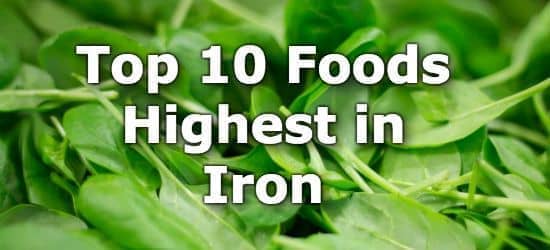
Iron is an essential mineral used to transport oxygen around the body in the form of hemoglobin. A deficiency in iron causes anemia (fatigue/weakness). Over time iron deficiency can lead to organ failure. (1,2)
Conversely, too much iron leads to the production of harmful free radicals. This interferes with metabolism, causing damage to organs like the heart and liver. (3,4)
The body regulates iron absorption, so overdose is rare and usually only occurs when people take supplements. Iron from natural food sources, like the ones listed below, is considered safe and healthy.
Foods high in iron include fortified cereals, beef, shellfish, dried fruit, beans, lentils, dark leafy greens, dark chocolate, quinoa, mushrooms, and squash seeds. The current daily value (DV) for iron is 18 milligrams (mg). (5)
Below is a list of the top 10 iron food sources.
- Introduction
- List of High Iron Foods
- Printable
- Iron Rich Foods by Nutrient Density (Most Iron per 100 grams)
- Non-Heme (Plant Based) Iron Foods
- Heme (Meat Based) Iron Foods
- Heme Iron vs. Non-Heme Iron
- How Much Iron Do You Need?
- Iron Absorption Factors
- Causes of Iron Deficiency
- Lists By Food Group
- References
-
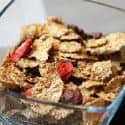 1. Fortified Cereals
1. Fortified Cereals
Iron
per 3/4 CupIron
per 100gIron
per 200 Calories19.6mg
(109% DV)67.7mg
(376% DV)34.7mg
(193% DV)See the list of 200 Breakfast Cereals Highest in Iron.
-
 2. Beef (Skirt Steak)
2. Beef (Skirt Steak)
Iron
per 6oz SteakIron
per 100gIron
per 200 Calories9.3mg
(52% DV)5.5mg
(30% DV)4.1mg
(23% DV)More Red Meat High in Iron
- 28% DV in a 3oz slice of beef liver
- 16% DV in a 3oz buffalo steak
- 14% DV in a 3oz beef chuck roast
- 14% DV in a 3oz lean ground beef patty (burger)
- 13% DV in a 3oz lamb shoulder roast
- 11% DV per 3oz of beef short ribs
See all meats high in iron.
-
 3. Shellfish (Oysters)
3. Shellfish (Oysters)
Iron
per 3oz ServingIron
per 100gIron
per 200 Calories7.8mg
(43% DV)9.2mg
(51% DV)11.3mg
(63% DV)More Seafood High in Iron (%DV per 3oz)
- 51% DV per 3oz of cuttlefish
- 48% DV per 3oz of whelk
- 45% DV per 3oz of octopus
- 32% DV per 3oz of mussels
- 18% DV per 3oz of abalone
- 14% DV per 3oz of scallops
See all fish high in iron.
-
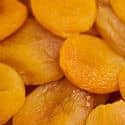 4. Dried Fruit (Apricots)
4. Dried Fruit (Apricots)
Iron
per CupIron
per 100gIron
per 200 Calories7.5mg
(42% DV)6.3mg
(35% DV)3.9mg
(22% DV)More Dried Fruit High in Iron
- 36% DV per cup of dried peaches
- 26% DV per cup of dried prunes
- 17% DV per cup of dried figs
- 17% DV per cup of dried raisins
- 7% DV per cup of dried apples
Note: Dried fruit is high in natural sugars and calories, so portion sizes should be limited to about one handful per day.
See the list of high iron fruits and vegetables.
-
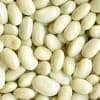 5. Large White Beans
5. Large White Beans
Iron
per CupIron
per 100gIron
per 200 Calories6.6mg
(37% DV)3.7mg
(21% DV)5.3mg
(30% DV)More Beans High in Iron
- 49% DV per up of soybeans
- 37% DV per cup of lentils
- 29% DV per cup of kidney beans
- 26% DV per cup of garbanzo beans (chickpeas)
- 25% DV per cup of lima beans
- 24% DV per cup of navy beans
- 20% DV per cup of black beans
- 20% DV per cup of pinto beans
- 20% DV per cup of black-eyed peas
See more high iron vegetarian and vegan foods.
-
 6. Spinach
6. Spinach
Iron
per Cup CookedIron
per 100gIron
per 200 Calories6.4mg
(36% DV)3.6mg
(20% DV)31mg
(172% DV)More Green Leafy Vegetables High in Iron
- 22% DV per cup of cooked Swiss chard
- 16% DV per cup of cooked turnip greens
- 15% DV per cup of cooked beet greens
- 14% DV per cup of cooked Scotch (curly) kale
- 14% DV per cup of raw mustard spinach
- 6% DV per cup of raw kale
- 5% DV per cup of raw beet greens
See more fruits and vegetables high in iron.
-
 7. Baking Chocolate (Unsweetened)
7. Baking Chocolate (Unsweetened)
Iron
per 1oz SquareIron
per 100gIron
per 200 Calories5mg
(28% DV)17.4mg
(97% DV)5.4mg
(30% DV)More Chocolate High in Iron
- 66% DV in 1 cup of cocoa powder
- 19% DV in 1oz of dark chocolate (70%-85% cocoa)
- 13% DV in 1oz of semi-dark chocolate (45%-59% cocoa)
- 6% DV per 1.5oz candy bar
- 6% DV per 1/2 cup of chocolate mousse
-
 8. Quinoa
8. Quinoa
Iron
per CupIron
per 100gIron
per 200 Calories2.8mg
(15% DV)1.5mg
(8% DV)2.5mg
(14% DV) -
 9. White Button Mushrooms
9. White Button Mushrooms
Iron
per Cup CookedIron
per 100gIron
per 200 Calories2.7mg
(15% DV)1.7mg
(10% DV)12.4mg
(69% DV)More Mushrooms High in Iron
- 45% DV per cup of sliced morels
- 14% DV per cup of straw mushrooms
- 10% DV per cup of chanterelles
- 6% DV per cup of slices oyster mushrooms
- 4% DV per cup of sliced shiitake mushrooms
-
10. Squash and Pumpkin Seeds
Iron
per 1oz HandfulIron
per 100gIron
per 200 Calories2.5mg
(14% DV)8.8mg
(49% DV)3.2mg
(18% DV)More Nuts & Seeds High in Iron
- 23% DV per oz of sesame seeds
- 13% DV per oz of hemp seeds
- 12% DV per oz of chia seeds
- 9% DV per oz of dry-roasted cashews
- 9% DV per oz of flax seeds
- 8% DV per oz of sunflower seeds
- 6% DV per oz of almonds
See all nuts and seeds high in iron.
Printable One Page Sheet
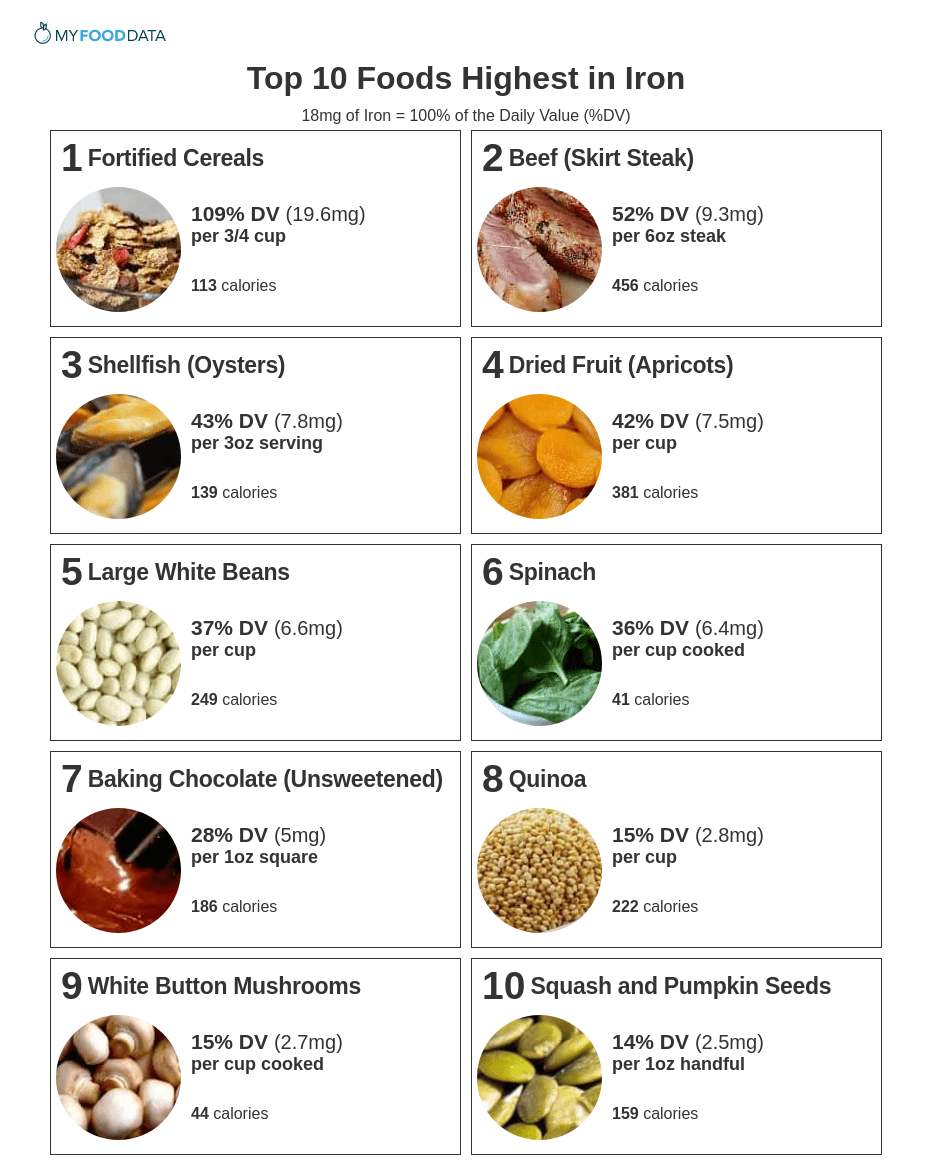
Iron Rich Foods by Nutrient Density (Most Iron per 100 grams)
| Food | Serving | Iron |
|---|---|---|
| 1. Dried Herbs (Thyme, Parsley, Spearmint, Black Pepper, Marjoram) | 100 grams | 687% DV (123.6mg) |
| 2. Fortified Cereals | 100 grams | 376% DV (67.7mg) |
| 3. Spirulina (Dried Seaweed) | 100 grams | 158% DV (28.5mg) |
| 4. Bran | 100 grams | 103% DV (18.5mg) |
| 5. Cocoa Powder | 100 grams | 86% DV (15.5mg) |
| 6. Liver (Chicken Liver) | 100 grams | 72% DV (12.9mg) |
| 7. Caviar (Fish Roe) | 100 grams | 66% DV (11.9mg) |
| 8. Shellfish (Oysters) | 100 grams | 51% DV (9.2mg) |
| 9. Wheat Germ | 100 grams | 35% DV (6.3mg) |
| 10. Cashews (Dry Roasted) | 100 grams | 33% DV (6mg) |
Non-Heme (Plant Based) Iron Foods
| Food | Serving | Iron |
|---|---|---|
| 1. Vital Wheat Gluten | 100 grams | 29% DV (5.2mg) |
| 2. Artichokes | 1 cup | 28% DV (5.1mg) |
| 3. Green Peas | 1 cup | 14% DV (2.5mg) |
| 4. Tempeh | 100 grams | 12% DV (2.1mg) |
| 5. Acorn Squash | per cup cooked | 11% DV (1.9mg) |
| 6. Dried Goji Berries | 5 tbsp | 11% DV (1.9mg) |
| 7. Tofu | 1/5 Block | 10% DV (1.9mg) |
| 8. Whole Wheat Bread | 1 slice | 6% DV (1.1mg) |
| 9. Molasses | 1 tbsp | 5% DV (0.9mg) |
| 10. Sorghum Syrup | 1 tbsp | 4% DV (0.8mg) |
Heme (Meat Based) Iron Foods
| Food | Serving | Iron |
|---|---|---|
| 1. Lean Chuck Pot Roast (Beef) | 3oz | 18% DV (3.2mg) |
| 2. Fish (Mackerel) | per 6oz fillet | 15% DV (2.7mg) |
| 3. Canned Tuna | 1 can (drained) | 14% DV (2.5mg) |
| 4. Lamb Stew Meat | 3oz | 13% DV (2.4mg) |
| 5. Turkey Meat (Dark) | 3oz | 7% DV (1.3mg) |
| 6. Trout | 3oz fillet | 7% DV (1.2mg) |
| 7. Bass | 1 fillet | 7% DV (1.2mg) |
| 8. Chicken Breast | 1/2 Breast | 6% DV (1mg) |
| 9. Pork Chops | 1 chop | 5% DV (0.9mg) |
| 10. Chicken Drumstick | 1 leg | 4% DV (0.6mg) |
Heme Iron vs. Non-Heme Iron
- Non-heme iron comes from plant foods, heme iron comes from animal foods. (9)
- Heme iron can be absorbed more efficiently by the body, with an absorption rate of 15% to 35%. Non-heme iron from plants is absorbed at a rate of 2% to 20%. (9)
- The body can better regulate absorption of non-heme iron, helping to protect against toxic effects. (10)
How much Iron Do You Need Each Day?
The recommended daily allowance (RDA) for iron ranges from 7mg to 27mg per day. The daily value for iron is 18mg per day. (5)
| Life Stage | RDA |
|---|---|
| Infants | |
| 0-6 months old | 0.27mg* |
| 7-12 months old | 11mg |
| Children | |
| 1-3 years old | 7mg |
| 4-8 years old | 10mg |
| Males | |
| 9-13 years old | 8mg |
| 14-18 years old | 11mg |
| 19-50 years old | 8mg |
| 50+ years old | 8mg |
| Females | |
| 9-13 years old | 8mg |
| 14-18 years old | 15mg |
| 19-50 years old | 18mg |
| 50+ years old | 8mg |
| Pregnancy | |
| 14-18 years old | 27mg |
| 18+ years old | 27mg |
| Lactation | |
| 14-18 years old | 10mg |
| 18+ years old | 9mg |
Source: Dietary Reference Intakes for Iron.
Factors which Affect Iron Absorption and Retention
- The most important factor is your existing iron level. A low iron level will increase absorption, while a high iron level will decrease absorption. In general, you absorb 2% to 20% of the iron from foods. (9)
- Meat proteins will increase the absorption of non-heme iron. (9)
- Vitamin C will increase the absorption of non-heme iron by as much as 85%. (11,12)
- Tannins, oxalates, polyphenols, and phytates found in tea and coffee can reduce the absorption of non-heme iron by up to 65%. Black tea reduces absorption more than green tea and coffee. (13,14)
- The following teas and beverages also inhibit iron absorption: Peppermint tea, cocoa, vervain, lime flower, chamomile, and most other herbal teas containing polyphenols. (14)
Causes of Iron Deficiency
- Menstruating Women - Due to blood loss during menstruation, women are at risk of iron deficiency. The greater the blood loss the greater the risk. (15)
- Individuals with Chronic Kidney Disease (CKD) - People with kidney disease, and especially those on dialysis, are at high risk of iron deficiency anemia. (16)
- Pregnant and lactating women - A developing fetus requires a high amount of iron, likewise, there is a high amount of iron lost through breast milk after birth. (17)
- Older infants and toddlers - Infants and toddlers require a lot of iron as they grow and so are at risk of iron deficiency. (18)
- People with low levels of Vitamin A - Vitamin A helps move iron from storage in the body. Without adequate amounts of vitamin A, the body cannot regulate iron leading to an iron deficiency. (19)
From the Nutrient Ranking Tool
Use the ranking tool links below to select foods and create your own food list to share or print.
- Foods High in Iron
- Foods Low in Iron
- Vegetables High in Iron
- Fruits High in Iron
- Vegetarian Foods High in Iron
- Nuts High in Iron
- Grains High in Iron
- Beans High in Iron
- Dairy High in Iron
- Breakfast Cereals High in Iron
- Fast Foods High in Iron
View more nutrients with the nutrient ranking tool, or see ratios with the nutrient ratio tool.
Related
Data Sources and References
- Uniyal N, Sethi Y, Chopra H, Dhawan M, Emran TB. Iron deficiency Int J Surg. 2022 Sep;105:106871. doi: 10.1016/j.ijsu.2022.106871. Epub 2022 Aug 29. 36049619
- Crider K, Williams J, Qi YP, Gutman J, Yeung L, Mai C, Finkelstain J, Mehta S, Pons-Duran C, Menéndez C, Moraleda C, Rogers L, Daniels K, Green P. Iron Deficiency Anemia: An Updated Review Cochrane Database Syst Rev. 2022 Feb 1;2(2022):CD014217. doi: 10.1002/14651858.CD014217. 36321557
- Sebastiani G, Pantopoulos K. Iron metabolism and toxicity Metallomics. 2011 Oct;3(10):971-86. doi: 10.1039/c1mt00082a. Epub 2011 Sep 7. 21901209
- Ponka P. Hemochromatosis Semin Hematol. 2002 Oct;39(4):249-62. doi: 10.1053/shem.2002.35638. 12382200
- U.S.FDA - Daily Value on the New Nutrition and Supplement Facts Labels
- Hallberg L, Rossander L, Skånberg AB. The inhibitory effect of bran on iron absorption in man Am J Clin Nutr. 1987 May;45(5):988-96. doi: 10.1093/ajcn/45.5.988. 3034044
- Eagling T, Wawer AA, Shewry PR, Zhao FJ, Fairweather-Tait SJ. Higher bioavailability of iron from whole wheat bread compared with iron-fortified white breads in caco-2 cell model: an experimental study J Agric Food Chem. 2014 Oct 22;62(42):10320-5. doi: 10.1021/jf5026295. Epub 2014 Oct 13. 25275535
- Jamieson JA, Neufeld A. Grain Products Are a Top Source of Energy and Nutrients among Nova Scotian Adults Following a Gluten-Free Diet PeerJ. 2020 Jul 27;8:e9590. doi: 10.7717/peerj.9590. eCollection 2020. 33194333
- Morris ER. Iron nutrition and absorption: dietary factors which impact iron bioavailability Fed Proc. 1983 Apr;42(6):1716-20. 6299808
- Fang X, Wei J, Min J, Wang F. Dietary intake of heme iron and risk of cardiovascular disease: a dose-response meta-analysis of prospective cohort studies Nutr Metab Cardiovasc Dis. 2020 Jun 9;30(6):1053-1055. doi: 10.1016/j.numecd.2020.03.007. Epub 2020 Mar 20. 32247532
- Hurrell RF, Reddy M, Cook JD. Effect of different drinks on the absorption of non-heme iron from composite meals Br J Nutr. 1999 Apr;81(4):289-95. 10999016
- Monsen ER. The role of vitamin C in iron absorption J Am Diet Assoc. 1988 Jul;88(7):786-90. 3290310
- Hurrell RF, Reddy M, Cook JD. Effect of different drinks on the absorption of non-heme iron from composite meals Br J Nutr. 1999 Apr;81(4):289-95. 10999016
- Brune M, Rossander L, Hallberg L. Inhibition of non-haem iron absorption in man by polyphenolic-containing beverages Eur J Clin Nutr. 1989 Aug;43(8):547-57. 2598894
- Garcia-Casal MN, Peña-Rosas JP, De-Regil LM, Gwirtz JA, Pasricha SR. A Review of the Risk Factors for Iron Deficiency Anaemia among Adolescents in Developing Countries Cochrane Database Syst Rev. 2018 Dec 22;12(12):CD010187. doi: 10.1002/14651858.CD010187.pub2. 30577080
- Chung M, Moorthy D, Hadar N, Salvi P, Iovin RC, Lau J. Iron Deficiency Anemia in Chronic Kidney Disease Rockville (MD): Agency for Healthcare Research and Quality (US); 2012 Oct. Report No.: 12(13)-EHC140-EF. 23230575
- Kirthan JPA, Somannavar MS. Iron Deficiency Anemia in Pregnancy Ann Hematol. 2023 Oct 3. doi: 10.1007/s00277-023-05481-2. Online ahead of print. 37787837
- Lozoff B, Georgieff MK. Iron deficiency and child development Semin Pediatr Neurol. 2006 Sep;13(3):158-65. doi: 10.1016/j.spen.2006.08.004. 17101454
- Abizari AR, Azupogo F, Brouwer ID. The influence of vitamin A status on iron-deficiency anaemia in anaemic adolescent schoolgirls in Myanmar PLoS One. 2017 Feb 2;12(2):e0170747. doi: 10.1371/journal.pone.0170747. eCollection 2017. 28152069
Try the recipe nutrition calculator, or daily meal planner.
Create a free account to log and track foods.

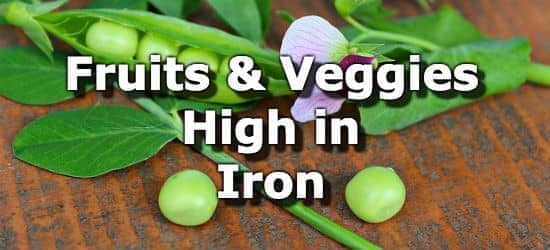 Next ➞
Next ➞